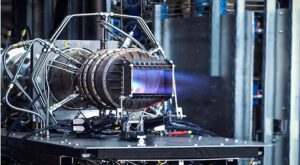Lead technology officials from the military services told lawmakers on Thursday that additional budget flexibility would improve their ability to more rapidly get after new capability innovation efforts, particularly those coming from non-traditional partners and small businesses.
Rep. Jim Langevin (D-R.I.), chairman of the House Armed Services Subcommittee on Cyber, Innovative Technologies, and Information Systems, specifically asked the panel of officials whether improvements could be made to the Pentagon’s Planning, Programming, Budgeting, and Execution (PPBE) process for allocating resources that would foster bolstered innovation.

“It would be wonderful to have more flexibility, particularly within the laboratories, to be able to quickly ramp up on ideas and technology that are important to us,” Dr. Philip Perconti, the Army’s deputy assistant secretary for research and technology, told the panel. “When I was the Army Research Laboratory director, we knew we had to start up and ramp up critically five years before the program was actually put into the budget.”
Perconti advocated for including a greater focus on “year of execution” resources in the PPBE process so the Army could get started on researching a new concept more immediately, rather than having to wait through two years of the average planning and programming cycle.
“It would be very, very interesting to be able to have a larger amount of resources that could go to [year of execution funding]. Of course, the issue is always if you’re trying to do something year of execution-wise to make sure that Congress is well-informed of where we’re going and what we’re doing with those resources,” Perconti said, adding that any change to PPBE could be tied in with a requirement for additional reporting to ensure the Army is able to provide updates on its research progress.
Kristin Baldwin, the Air Force’s lead science and technology official, said additional flexibility to move funds between budget areas during the PPBE process would allow the service to better target dollars for innovation efforts.
“Time is of the essence when you’re thinking about innovation. I would agree that a study of the [PPBE] system is warranted. We’ve done so much to study acquisition and procedures in our S&T to try to make change and accelerate change,” Baldwin said. “What we’re finding in the Air Force is, as we try to bridge the valley between technology and acquisition, it really benefits greatly if you can partner and collaborate early from the get-go between technologists as well as production entities and sustainment activities, all separate budget accounts.”
Sen. Jack Reed (D-R.I.), chairman of the Senate Armed Services Committee, has said in recent weeks he would like to assess potential reforms to the PPBE that would allow the Pentagon to embrace a “post-Industrial Age model” for doing business, noting the process has largely been unchanged since the 1960s (Defense Daily, May 14).